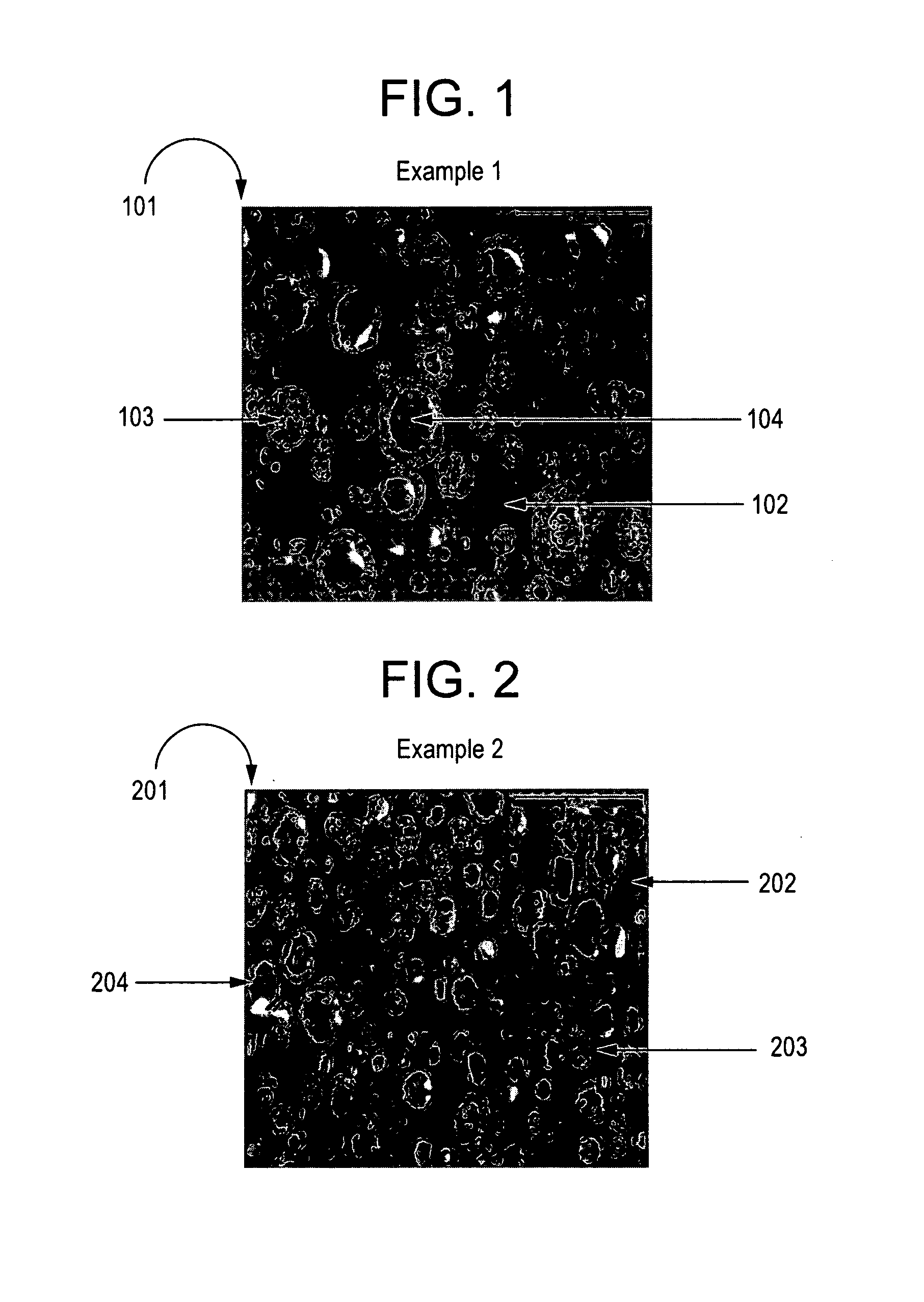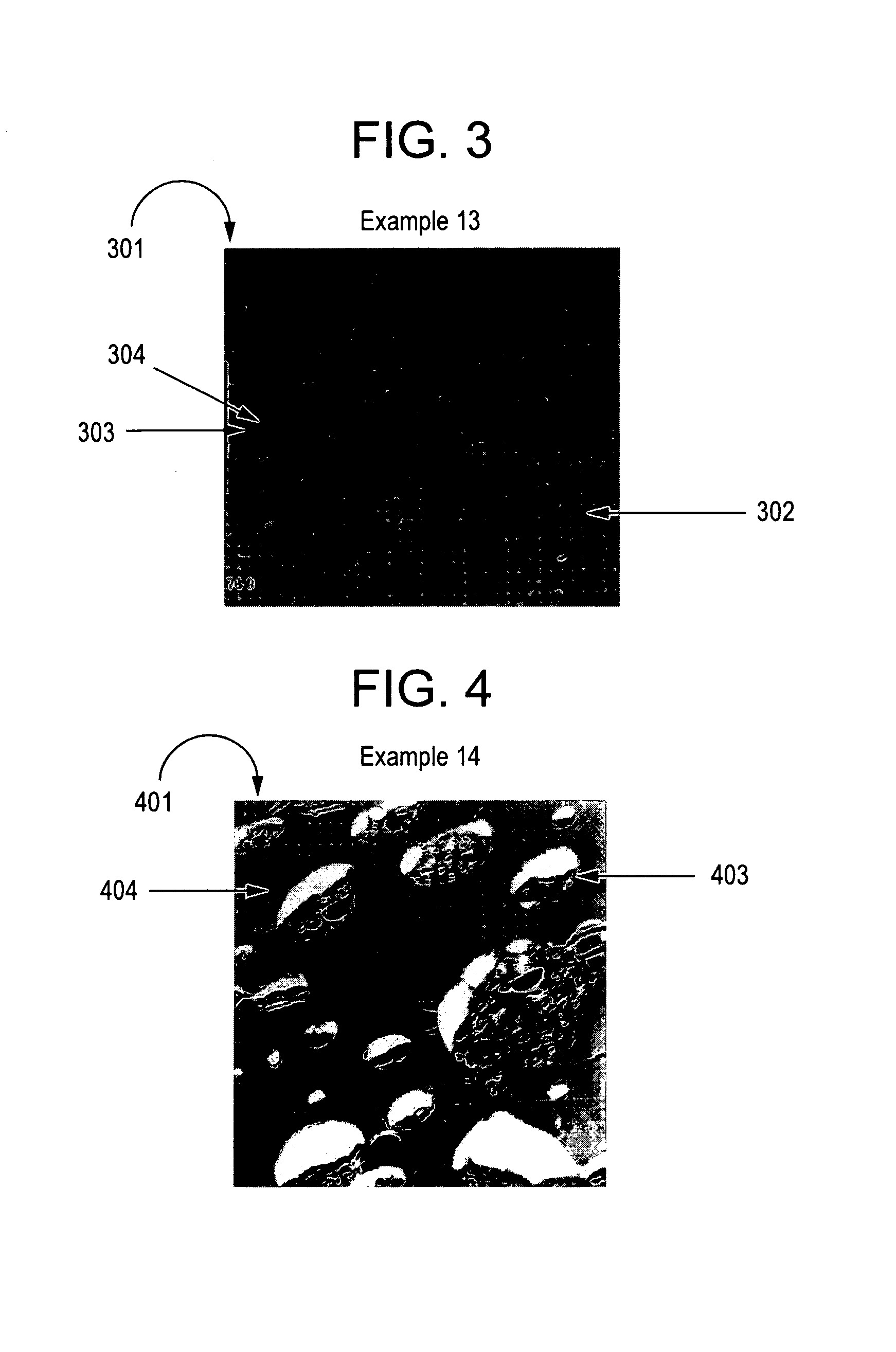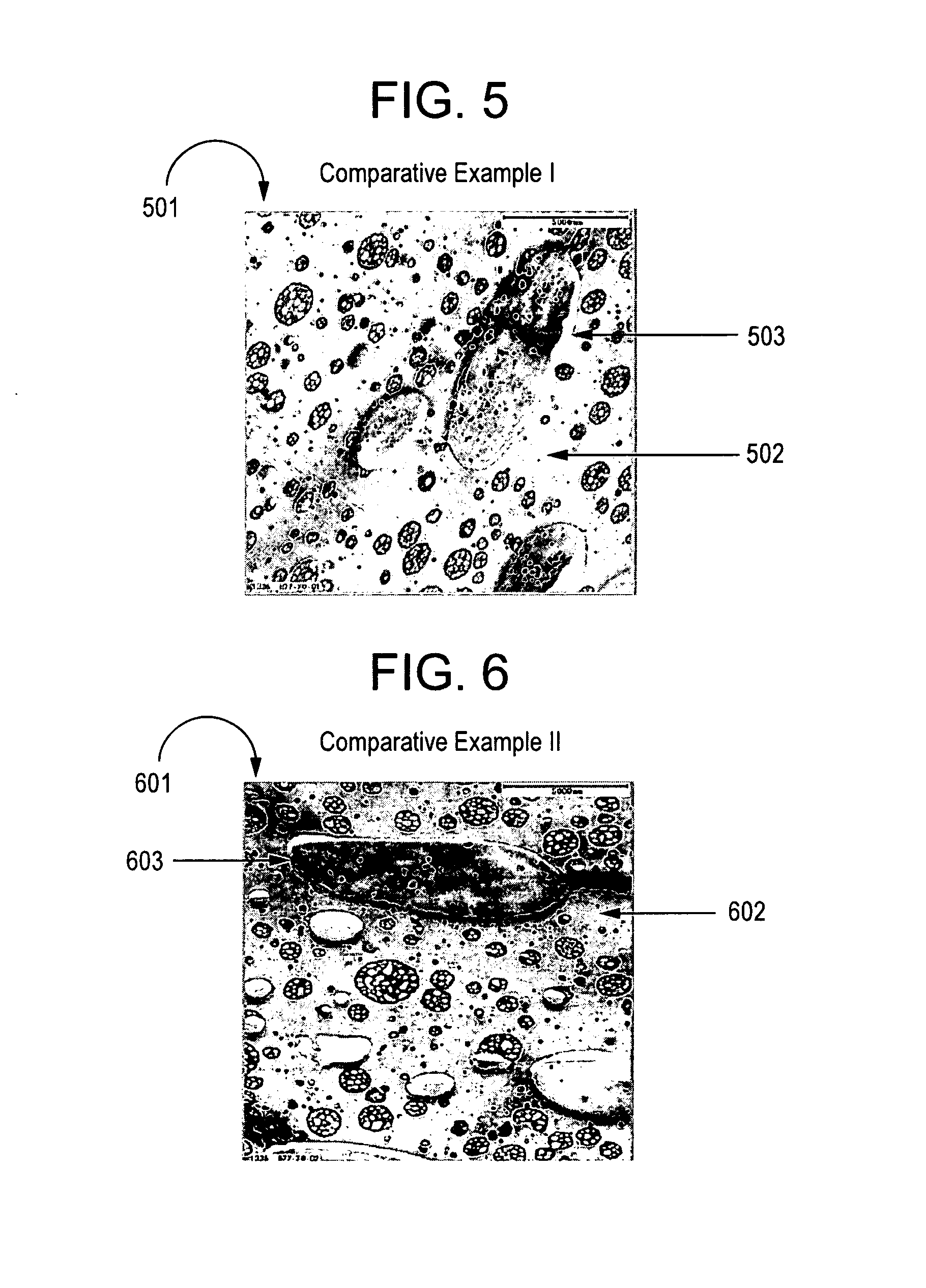Polystyrene blends and a method of making same
a technology of polystyrene and blends, applied in the field of polystyrene blends, can solve the problem of less than optimal selection
- Summary
- Abstract
- Description
- Claims
- Application Information
AI Technical Summary
Benefits of technology
Problems solved by technology
Method used
Image
Examples
example 1
[0039]A HIP polystyrene blend is prepared by dissolving 5 percent of a syndiotactic polypropylene sold under the trade designation EOD 99-19 by ATOFINA and 6 percent of a percent rubber sold under the trade designation TAKTENE® 550 T by BAYER in styrene monomer at 110° C. 300 ppm Lupersol® L-531, 100 ppm Lupersol L-233 and 400 ppm maleic anhydride are added and the solution held at 110° C. for 120 minutes. The admixture temperature is raised to 130° C. and held for 60 minutes. The admixture temperature is raised to 150° C. and held for 60 minutes. During the course of and at the end of the heating periods, samples are removed and devolatized at 225° C. for 25 minutes at a pressure of 0.8 torr (107 Pascal). The solids level in the samples is about 70%. A sample of the final polymer is subjected to transmission electron microscopy to prepare a photomicrograph that is shown below as FIG. 1. It takes about 5–10 minutes for dissolution of the syndiotactic polypropylene in the styrene mon...
example 2
[0040]Example 1 is repeated and tested substantially identically except that 10 percent syndiotactic polypropylene is used and the TEM photomicrograph is shown below as FIG. 2.
[0041]An examination of the electron photomicrographs of the polymers of Example 1 and Example 2 (FIGS. 1 & 2) shows that the polymers (101&201) have a continuous polystyrene phase (102&202) and, distributed therein, inclusions of syndiotactic polystyrene and polybutadiene. These inclusions consist of primarily two types. A first type (103&203) consists of a honeycomb type structure of black polybutadiene and syndiotactic polystyrene. A second structure (104&204) consists of a sphere of syndiotactic polystyrene surrounded by a layer or membrane of black polybutadiene.
examples 3 – 6
Examples 3–6
[0042]The procedure of Example 1 is repeated substantially identically except that components are varied as shown below in Table 1. The samples, prior to being devolatilizing, are analyzed for physical properties and the results as displayed below in Table 1.
[0043]
TABLE 1Formulations and Results of HIPS Prepared in the Presence ofSyndiotactic Polypropylene And Ethylene PropyleneCopolymer And Maleic AnhydrideExample 3Example 4Example 5Example 6Feed% Syndiotactic510Polypropylene1% Ethylene510PropyleneCopolymer2% Rubber38888Maleic12001200400400Anhydride(PPM)Lupersol 531300300300300(PPM)Lupersol 233100100100100(PPM)PropertiesRPS microns49.07.92.82.4% rubber516.515.46.66.4% sPP or EP610.419.36.112.5% gels743.847.418.922.4Swell Index87.77.911.78.2Gel / rubber92.73.12.93.5DMA10rubber Tg ° C.−85.4, 2.0−86.6−87.1, −14.4Tan delta0.11, 0.0530.0490.041, 0.028EOD 99-19 is a syndiotactic polypropylene having a MFI of 12 available from ATOFINA.EOD 94-21 is an ethylene propylene copolymer...
PUM
| Property | Measurement | Unit |
|---|---|---|
| temperatures | aaaaa | aaaaa |
| temperature | aaaaa | aaaaa |
| temperature | aaaaa | aaaaa |
Abstract
Description
Claims
Application Information
 Login to View More
Login to View More - R&D
- Intellectual Property
- Life Sciences
- Materials
- Tech Scout
- Unparalleled Data Quality
- Higher Quality Content
- 60% Fewer Hallucinations
Browse by: Latest US Patents, China's latest patents, Technical Efficacy Thesaurus, Application Domain, Technology Topic, Popular Technical Reports.
© 2025 PatSnap. All rights reserved.Legal|Privacy policy|Modern Slavery Act Transparency Statement|Sitemap|About US| Contact US: help@patsnap.com



